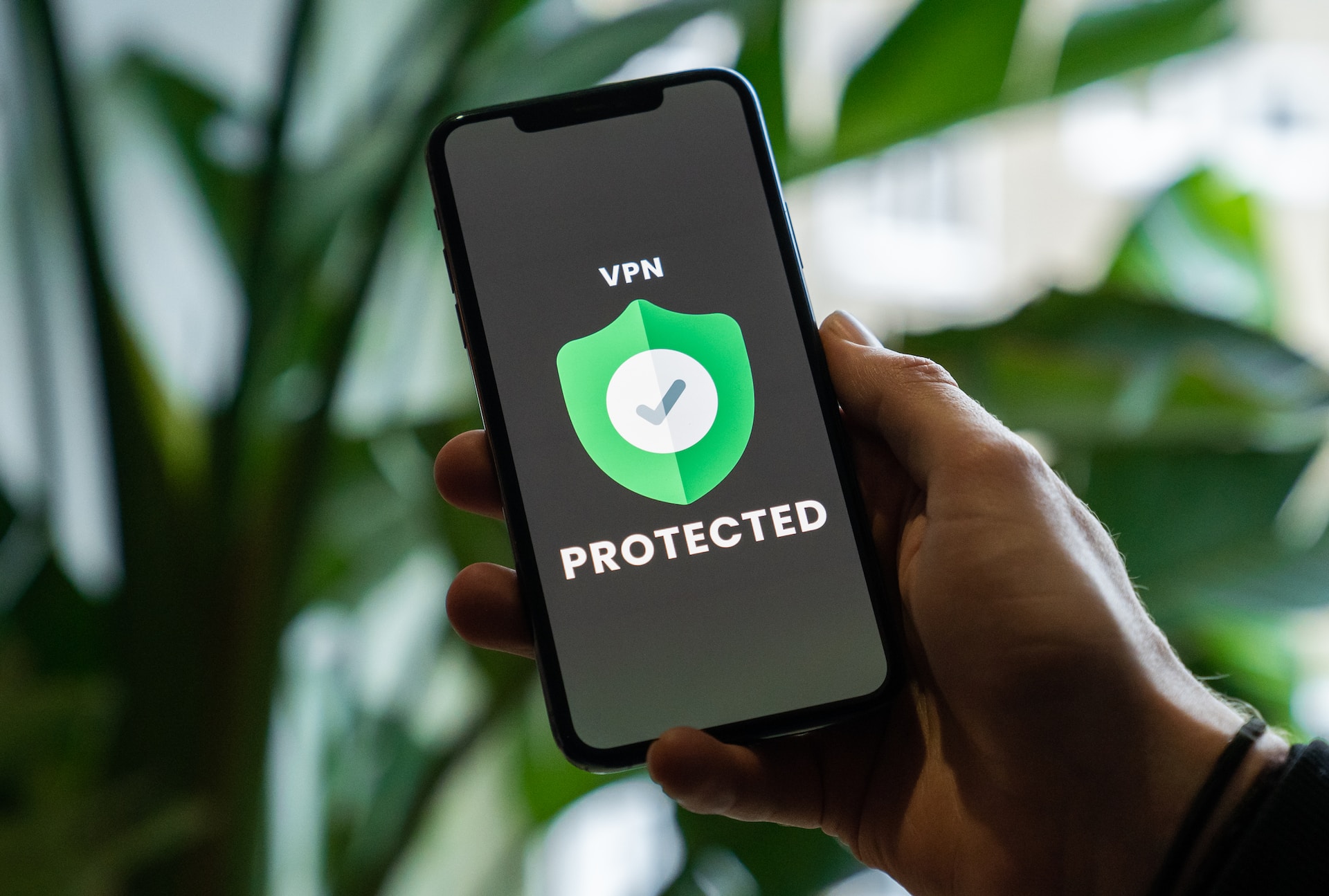Learn about secure networks (VPNs, SSL/TLS, secure wireless networks, IDPS), and how they work together to safeguard your digital assets.
More...
In this article, we'll explore the importance of secure networks and how they protect our data and privacy in an age where cyber threats are on the rise.
A secure network acts as a digital guardian, shielding our sensitive information, communications, and digital assets from unauthorized access, theft, or tampering. From online banking to sharing personal moments on social media, we depend on secure networks to maintain our privacy and ensure that our online activities remain confidential. But what exactly are these secure networks, and how do they work?
In this article, we’ll uncover the mechanisms that keep our digital lives safe and learn about emerging solutions that show great potential in strengthening cybersecurity. After that, we'll explore the synergy between various secure networks and how they work together to create a robust and resilient security posture. Let’s get started!

Types of Secure Networks
Virtual Private Networks (VPNs)
VPNs are secure networks that create an encrypted tunnel between a user's device and a remote server, effectively masking their online activities and location. This encrypted tunnel secures the data sent and received, which makes it unreadable to anyone attempting to intercept it. VPNs use various encryption protocols, such as OpenVPN, IKEv2, and WireGuard, to ensure secure communication.
VPNs are essential for multiple reasons. They enable users to bypass geographic restrictions by connecting to a server in a different country, allowing them to access content that may be blocked in their region. VPNs also help maintain user privacy by preventing ISPs and other third parties from monitoring their online activities. They are also crucial for securing data transfers, especially when using public Wi-Fi networks that are vulnerable to eavesdropping and cyberattacks. In short: If you want to keep your online activities private while using a public Wi-Fi network (and you should!), don't forget to use a VPN service.
There are numerous reputable VPN providers, each with its unique features and offerings. Some of the top VPN services include NordVPN, ExpressVPN, and ProtonVPN, which are known for their high-quality services, robust security features, and user-friendly interfaces. When choosing a VPN, it's worth considering factors such as the provider's privacy policy, server locations, speed, and compatibility with different devices.
That being said, it's probably a good idea to choose one without spending too much time on comparing highly specific details of each service. If you get bogged down with those, you might not get around to deciding on one!
Intrusion Detection and Prevention Systems (IDPS)
Intrusion detection and prevention systems are secure networks, constantly monitoring and analyzing network traffic to identify potential threats and take appropriate action. These networks employ a combination of signature-based, anomaly-based, and behavior-based detection techniques to recognize known and unknown threats. (More on that in our article about intrusion detection systems.) Upon detecting malicious activity, an IDPS can block the offending traffic, isolate the affected systems, or alert administrators to take manual action.
IDPS solutions are crucial in protecting organizations from cyberattacks, data breaches, and unauthorized access. IDPS networks provide real-time monitoring and threat detection, and help organizations maintain the integrity and confidentiality of their digital assets. They also contribute to regulatory compliance by ensuring that organizations follow industry-specific security standards and best practices.
Some popular IDPS solutions: Cisco's Firepower, Palo Alto Networks' Threat Prevention, and Fortinet's FortiGate.
Each of these offerings provides advanced threat detection and response capabilities, along with features such as deep packet inspection, security analytics, and centralized management. When selecting an IDPS solution, organizations should consider factors like scalability, ease of deployment, and integration with existing security infrastructure.
Secure Networks, Wireless Edition: Secure Wireless Networks
Secure wireless networks use encryption protocols, such as WPA2 or WPA3, to protect the data transmitted between devices and the network. These protocols secure the communication by encrypting the data sent over the airwaves, which ensures that only authorized devices with the correct credentials can access the network and read the transmitted data. This prevents unauthorized users from connecting to the network or eavesdropping on the communication.
Secure wireless networks are essential for maintaining privacy and protecting sensitive information when using Wi-Fi at home, work, or any public places. That's because without proper security measures in place, wireless networks can be susceptible to attacks like man-in-the-middle, rogue access points, and eavesdropping. These could lead to data breaches and unauthorized access to sensitive information.
Trusted brands that offer secure wireless routers and access points include Netgear, TP-Link, and Asus, which are well-known for their reliable and high-performance products. These manufacturers provide devices that support the latest encryption standards, offer robust security features such as guest networks and parental controls, and are regularly updated to address emerging security threats.
When setting up a secure wireless network, you should also create strong, unique passwords and keep your devices updated with the latest firmware to fend off potential vulnerabilities.
Secure Sockets Layer (SSL) and Transport Layer Security (TLS): Encrypting the Web
SSL and TLS are cryptographic protocols that provide end-to-end encryption for secure communication over networks, such as the internet. They can be thought of as a digital lock and key system that ensures only authorized parties can access the transmitted data. When a user visits a website secured with SSL or TLS, their browser and the web server exchange a series of messages to establish a secure connection. Once the connection is established, all data transmitted between the user and the server is encrypted, which ensures its confidentiality and integrity.
SSL and TLS are commonly used for securing web traffic, email, and other sensitive data transfers. They are vital in protecting sensitive information, such as login credentials, personal data, and financial transactions, from being intercepted by malicious actors. Furthermore, they help build trust with users by displaying a padlock icon or a green address bar in the browser, indicating that the connection is secure. Like this:

Certificates issued by trusted Certificate Authorities (CAs) like DigiCert, Let's Encrypt, and GlobalSign are essential in implementing SSL and TLS for websites and online services. These certificates validate the website's identity and ensure that the site's encryption keys are securely managed. When choosing an SSL/TLS certificate provider, you should consider factors such as the level of validation, warranty, and customer support.
Quantum-Safe Encryption / Post-Quantum Cryptography: The Future?
You might not have heard about it before, but quantum-safe encryption is a set of cryptographic algorithms designed to resist attacks from quantum computers. As quantum computing advances, the potential for breaking traditional encryption methods, such as RSA and elliptic curve cryptography, increases. This makes quantum-safe encryption an essential area of research and development to ensure the continued security of digital communication in a post-quantum world.
Post-quantum cryptography focuses on developing new encryption schemes that are resistant to both classical and quantum attacks. Some of the most promising post-quantum cryptographic approaches include lattice-based cryptography, code-based cryptography, and multivariate cryptography. These algorithms are designed to provide strong security guarantees even in the face of powerful quantum computers.
As this technology is still very much work-in-progress, there are no specific services or brands to recommend at this time. However, the National Institute of Standards and Technology (NIST) is actively working on standardizing post-quantum cryptography, which will pave the way for future implementation and adoption. The ongoing research in this field highlights the importance of staying ahead of emerging threats and adapting to new technologies to maintain the security of our digital world.

Synergy in Security: How Different Types of Secure Networks Work Together
VPN and SSL/TLS: A Robust Encryption Strategy
The combination of VPNs and SSL/TLS encryption provides a strong, multifaceted approach to secure data transmission. When a VPN connection is established, it forms an encrypted tunnel, concealing the user's internet connection and shielding it from potential threats. Concurrently, SSL/TLS-secured websites encrypt data exchanged between the user and the website, ensuring confidentiality and integrity.
This powerful tandem is particularly important when dealing with public Wi-Fi networks or managing sensitive information online. By leveraging both VPNs and SSL/TLS encryption, users can maintain their privacy, safeguard their data, and ensure secure communication across the web.
Secure Wireless Networks and IDPS: A Comprehensive Network Defense
Integrating secure wireless networks and IDPS yields a potent defense mechanism against various threats. Secure wireless networks employing WPA2 or WPA3 encryption protocols protect data transmitted between devices and the network while restricting access to authorized users. Simultaneously, IDPS solutions monitor and analyze network traffic, identifying and mitigating potential threats to protect network assets.
The collaboration between these technologies provides a multilayered security infrastructure, making it difficult for attackers to breach the network or access sensitive data.
Layered Security: Leveraging Multiple Secure Networks for Optimal Protection
To maximize network security, employing a layered approach that combines various secure networks and security technologies is highly recommended. As you can see, this strategy addresses diverse threat vectors and potential vulnerabilities, and ensures that even if one security measure fails, others remain in place to protect the network.
In addition to the examples mentioned above, organizations often deploy other advanced security technologies, such as next-generation firewalls, multi-factor authentication, and security information and event management (SIEM) systems. When organizations integrate these technologies with secure networks, they can establish a comprehensive and adaptive security solution capable of evolving with emerging threats and ensuring continuous protection of their digital assets.
The layered approach also supports efficient risk management: they enable organizations to identify, assess, and mitigate potential risks more effectively. When organizations understand the strengths and limitations of each security technology, they can allocate resources more efficiently and prioritize their security efforts to address the most critical threats and vulnerabilities. This proactive approach to network security helps organizations stay ahead of emerging risks and maintain the trust and confidence of users and stakeholders.
As technology continues to advance, so too must our approach to network security. Embracing a layered security strategy and leveraging the synergy of various secure networks will be essential in ensuring the ongoing protection of our digital world. By staying vigilant and proactive, we can confidently navigate the complexities of the cyber landscape and foster a safer, more secure digital future for all.
Want to know more about secure networks? Check out our guide on network security management in particular.
We hope you found our article on secure networks useful. If your company is looking for IT professionals and you are interested in IT recruitment or IT staff augmentation, please contact us and we will be happy to help you find the right person for the job.
To be the first to know about our latest blog posts, follow us on LinkedIn and Facebook!
